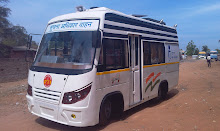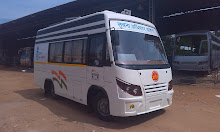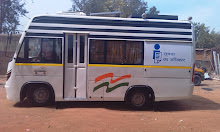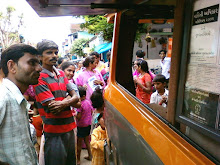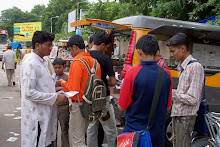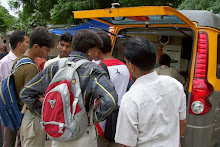Indian Express: New Delhi: Thursday, January 23, 2020.
Athlete-coach relations have bordered on a feudal paternalism that can foster predators. That culture must change.
The report by the Indian Express (January 16) on the cases of sexual harassment — unearthed via RTI — of women (mostly minor) athletes training in the Sports Authority of India (SAI) centres is outrageous and painful. What is most shocking is that the majority of cases are complaints against those who mentor, teach and train the athletes: Twenty-nine of the 45 cases of sexual harassment in 24 centres of the SAI over the past 10 years, with numerous complaints pending, are against coaches.
While sexual harassment within institutions is not new and the burden to complain and call to account has been shouldered by women undergoing the trauma, the concerns raised by India’s own campaign are now finally resonating in the sports arena. It has revealed the underbelly of rampant corruption that goes on not just by way of doping but sexual harassment — two of sports’ most deep-rooted problems. Just as in the cases of gymnasts and figure-skating athletes in the US, where young women, and sometimes men in their teens, had to undergo years of sexual abuse and harassment with debilitating impact on their minds, bodies and futures, the report uncovers this horrific experience in the Indian sports establishment, and, points to the urgent need for recourse to justice.
In the last couple of years in India, young women in educational spaces have been clamouring for the implementation of due processes to obtain justice in sexual harassment cases. And when that has frustrated them, they have resorted, legitimately, to calling them out, by what is referred to as naming and shaming of professors and academics. This manner of response from women from some educational institutions has not been easy. However, the act of coming out to name perpetrators after undergoing trauma for years is doubly painful for those in institutions as rigid and removed from the mainstream as sporting centres, where the stakes are much higher. Arriving at a sporting institution, being mentored, prepared and coached is a stepping stone in terms of class and status mobility. It is with tremendous courage, and following immense suffering, that these women have called out their perpetrators. Hence, more reason why due processes and accountability measures have to be in place.
When young women come to sport, it’s very much like, and yet quite unlike, how young men come to sport. Their subsequent trajectories vary as well. But when both do well, women’s specific journeys are hardly charted. Many young individuals see sports as a way out of their marginality, be it class, caste, gender or sexual expression. The sports quota admissions in colleges and universities are a sure way to nurture your talent which will then land you a decent job again via sports quotas in banks, the railways or any public sector corporation — a definite way of ensuring social mobility.
As a 16-year-old, a third place in the combined track-and-field event, heptathlon, in a national competition, landed me a place in the 1982 Asian Games preparatory camp at the National Institute of Sports, Patiala, of the pre-SAI days. Coming from a school where the principal observed promising youngsters before sending them to train in local clubs and, thereafter, through local competitions into the state and national events, I was unaware of the “culture” of national sporting camps and centres — the same kind of culture that the former director-general of SAI mentions in another report in this publication (IE, January 17). Athletes paid “respect” to the coaches, touched their feet at the beginning of the day, and often had individual mentor-mentee relationships, instead of training as part of a group. At first, I took this to be a pattern geared to infuse drive and dedication for international competitions. But later, I realised that these were remnants of feudal practices of subservience, service, and loyalty that bound athletes to their coaches, bordering sometimes on quid-pro-quo traps for the athletes. It is shocking that this culture continues to date, as reported in the numerous “extractions” that coaches seek out of their mentees.
In India, we have been unable to adopt the model perfected in European countries, where schools become catchment areas for sporting talent, which are then nurtured through training and competition at district, state, and national levels. The setting up of the SAI in 1984, and its development via schemes and centres for training, was the only way to reach out to vast sections of young aspirants who have no access to private avenues for sporting excellence. In fact, around the same period, states such as Kerala had indeed nurtured, through their own sports schools and sports hostels, similar talent: Some of my contemporaries of that time include P T Usha, Shiny Wilson, and Mercy Kuttan, all products of these state sports institutions.
At present, many international and celebrity sports men and women have emerged out of elite academies with individual attention and mentoring — they are lauded in the media and in public discourse, leading to a marginalisation of the institutional mechanisms that draw talent from schools, and upwards from that point. The SAIs were an attempt to retain an institutional and a purportedly democratic outreach for talent, but instead, now reflect a redundant culture of mentorship which continues to retain shades of feudal relations.
Casting out this masculinist and feudal ethos, sports mentoring needs to embody genuine care and encouragement. The sports coaching centre and the coach should act as a fulcrum between society that throws up talent via schools or private associations, and athletes, who emerge not just as champions winning laurels for the country but as individuals who receive the right nurturing, and are committed to their sport. This is what we expect in coaches as mentors, rather than the brand of paternalism that paves the way for predators.
The writer teaches women’ studies at Tata Institute of Social Sciences, Mumbai and is a former Indian Universities record holder in heptathlon.











